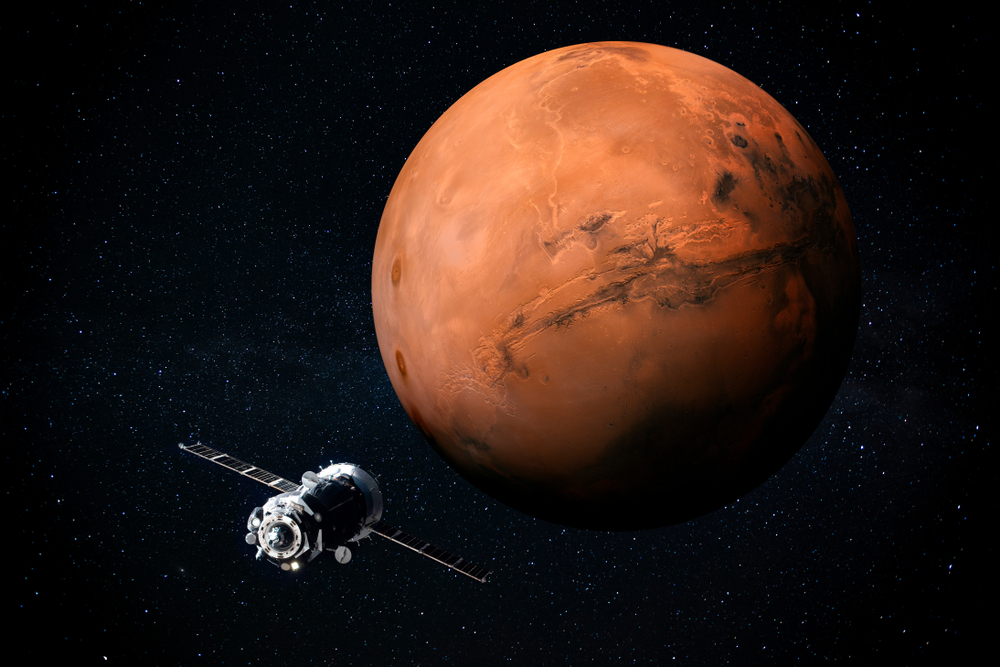3 Key Facts About Mars: What Makes the Red Planet Unique

Mars, often referred to as the Red Planet, has intrigued humans for centuries with its striking red appearance and mysterious surface. This fascinating world, our next-door neighbor in the solar system, carries a host of secrets that scientists are eager to uncover. Studying Mars is not merely a scientific endeavor; it represents a significant leap in our quest to understand the complexities of the solar system.
By exploring Mars, we can gain insights into the planet’s geology, climate, and potential for past or present life, which, in turn, enhances our broader comprehension of planetary science. In this blog post, we will delve into three key facts that make Mars an exceptional and continuously captivating subject of study.
Key Fact 1: The Presence of Water
The discovery of water ice on Mars has long been a pivotal point in our understanding of the Red Planet. Early missions in the 1970s, such as the Mariner and Viking programs, hinted at the presence of water through images of seemingly water-carved channels and valleys. This suspicion was confirmed in the early 2000s when the Mars Odyssey orbiter detected vast amounts of hydrogen just below the Martian surface, indicating the existence of water ice.
More recently, the Mars Express and Mars Reconnaissance Orbiter missions made groundbreaking discoveries of liquid water. Using radar technology, scientists have detected subsurface lakes beneath the planet’s southern polar ice cap. These findings not only fortify the hypothesis that Mars once harbored a much wetter and warmer climate, conducive to life, but they also have profound implications for future human colonization.
The presence of water resources could support agricultural endeavors, provide drinking water, and be used to generate oxygen and fuel, making sustainable human settlement on Mars a tangible possibility.
Key Fact 2: The Mysteries of Martian Weather
Mars’ weather is shaped by its thin atmosphere, which is composed primarily of carbon dioxide, with traces of nitrogen and argon. This tenuous atmosphere, only about 1% the density of Earth’s, significantly influences the planet’s weather patterns. One of the most dramatic manifestations of Martian weather is its colossal dust storms.
These storms can envelop the entire planet, reducing visibility and altering atmospheric temperatures. Unlike Earth, where weather patterns are primarily driven by water vapor, Martian air currents and weather phenomena are largely influenced by seasonal changes and dust activity. As Mars orbits the Sun, it experiences pronounced seasonal variations due to its elliptical orbit and axial tilt, resulting in temperature fluctuations and changes in surface pressure that can trigger massive dust storms.
These seasonal effects not only shape the Martian landscape but also present challenges and opportunities for future exploration missions, as understanding and predicting weather patterns is crucial for the safety and success of robotic and human explorers.
Key Fact 3: Unique Geological Features
Mars is home to some of the most awe-inspiring geological features in the solar system, making it a subject of great interest for scientists and enthusiasts alike. Olympus Mons, the tallest volcano in the solar system, stands at an astounding height of approximately 22 kilometers (13.6 miles), nearly three times the height of Mount Everest.
This massive shield volcano dwarfs any volcanic structure found on Earth, offering insights into the volcanic activity and internal dynamics of Mars. Complementing this colossal volcano is Valles Marineris, a vast canyon system that stretches over 4,000 kilometers (2,500 miles) in length, making it one of the largest and most breathtaking canyons ever discovered.
This immense canyon, with its deep valleys and towering cliffs, hints at the intense tectonic forces and erosional processes that have shaped the Martian surface. Additionally, numerous ancient river valleys and lake beds have been identified across the planet, providing evidence of a time when liquid water flowed freely on its surface.
These geological formations not only highlight Mars’ dynamic past but also raise intriguing questions about the planet’s potential to support life, both in its history and possibly in the future.
Conclusion
In summary, Mars captivates our imagination with its fascinating geological and atmospheric phenomena, as well as its potential to support life.
Firstly, the presence of water ice and subsurface lakes reveals a history of a wetter, warmer Mars, and offers hope for future human colonization. Secondly, the enigmatic Martian weather, shaped by its thin atmosphere and dramatic dust storms, presents both challenges and opportunities for exploration. Finally, the planet’s unique geological features, including Olympus Mons and Valles Marineris, provide invaluable insights into the dynamic processes that have sculpted Mars over billions of years.
The importance of ongoing Mars missions and research cannot be overstated. These endeavors not only enhance our understanding of Mars itself but also contribute to the broader field of planetary science and our knowledge of the solar system. Each discovery brings us one step closer to answering fundamental questions about the potential for life beyond Earth and the future of human space exploration.
We encourage you to stay updated with the latest Mars discoveries and advancements. As technology evolves and missions become increasingly ambitious, the Red Planet will undoubtedly continue to surprise and inspire us. Follow the latest news from space agencies like NASA, ESA, and others, and immerse yourself in the captivating journey of exploring our neighboring planet.




